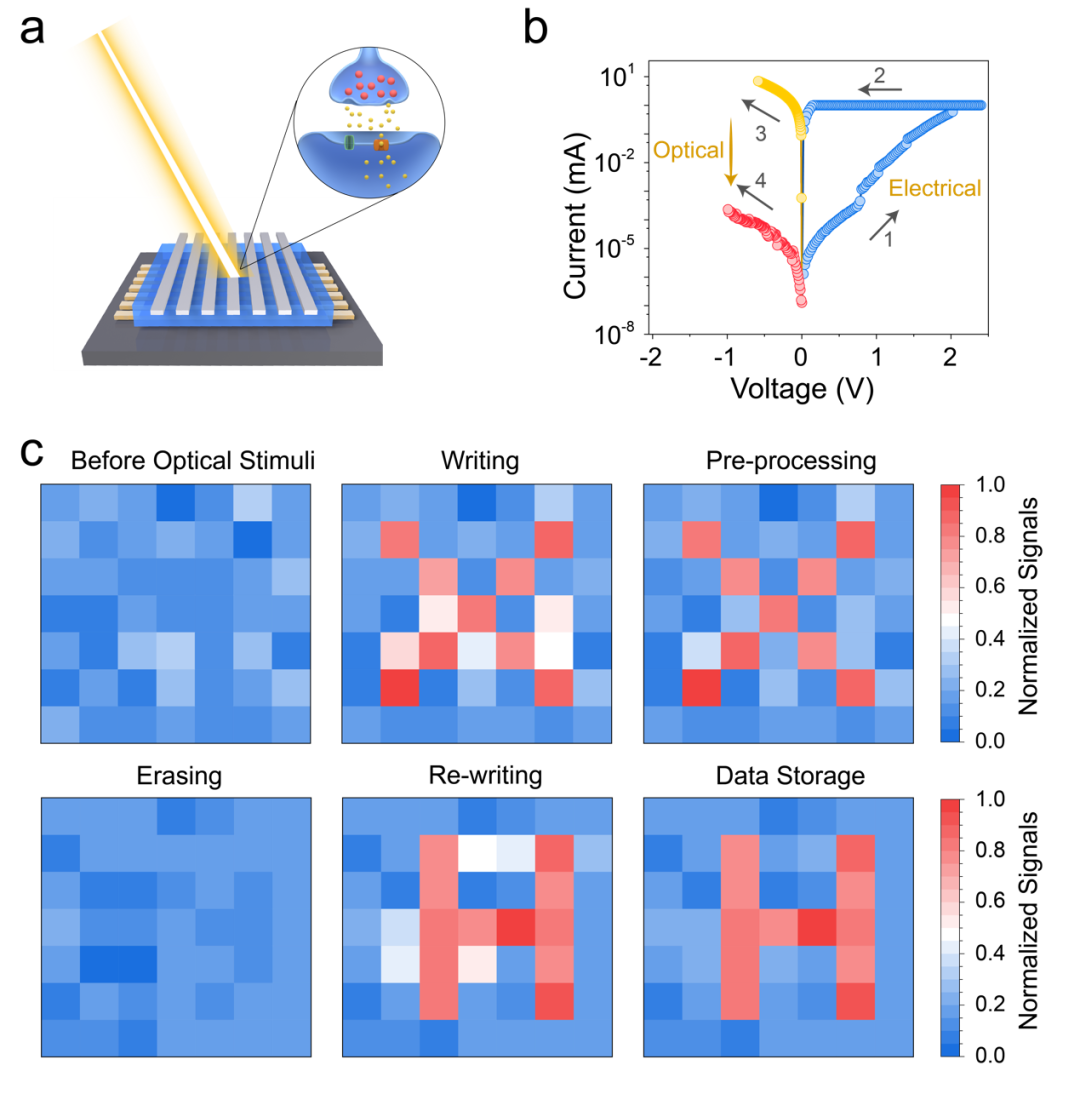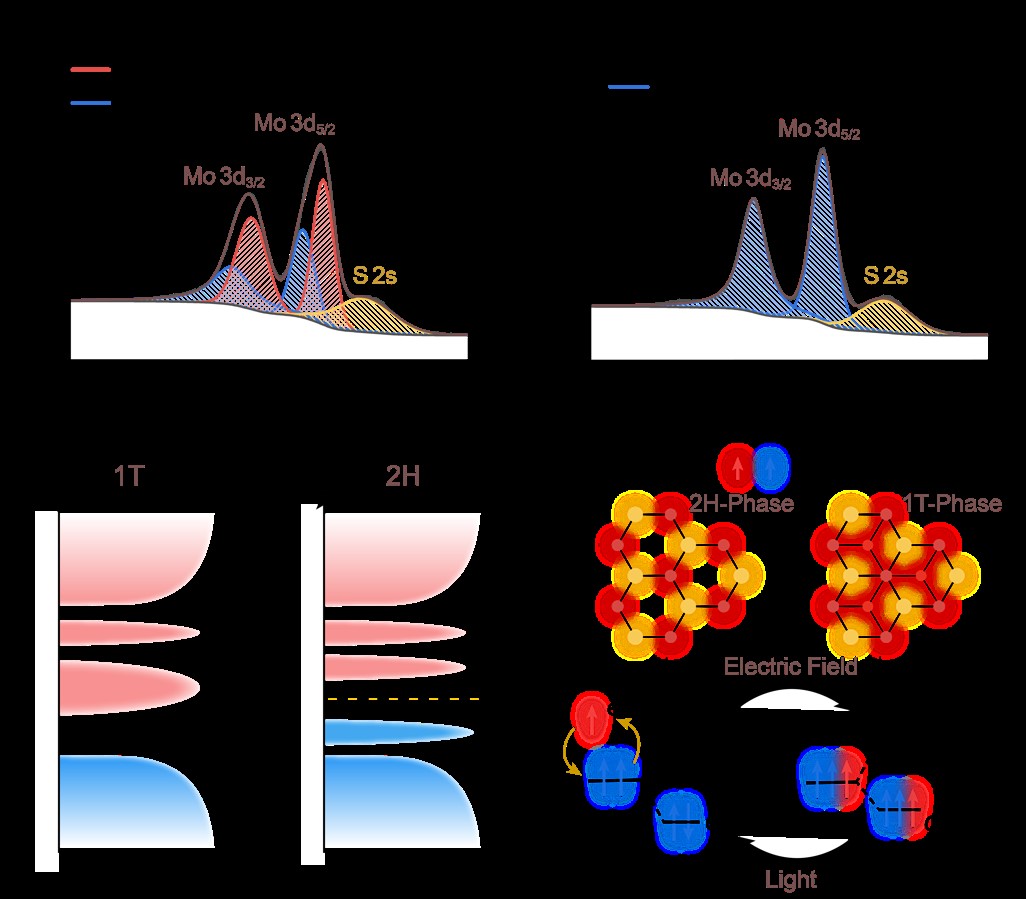
The artificial visual system constitutes a vital component of various artificial intelligence systems, such as autonomous vehicles and intelligent robots. Conventional artificial vision systems typically comprise sensing, storage, and processing units whose complex circuit structures result in large amounts of invalid data and high energy consumption during the data transfer between different units. By contrast, sensory neurons in the human visual system can detect and preprocess light stimuli, allowing faster data processing with less energy consumption. In order to create a more efficient artificial vision system, it is ideal to mimic the human visual system and design a device that integrates sensing, processing, and memory functions.
Recently, Professor Hui Wang's team at Shanghai Jiao Tong University discovered the reversible phase transition process of MoS2 triggered by light and electric fields in O-doped MoS2. By triggering the phase transition of MoS2 from the 1T phase to the 2H phase through the light field, a non-volatile resistive switching effect has been successfully realized. The device responds directly to optical stimuli with a switching ratio of more than 104 and exhibits excellent data retention characteristics. Furthermore, the team has prepared an integrated memristor array with a crossbar structure and displayed its ability to sense, process, and memorize optical signals, demonstrating the possibility of large-scale integration of this device.
Chang Ke, a PhD candidate at the School of Physics and Astronomy, Shanghai Jiao Tong University, is the first author of this paper, and Prof. Hui Wang at the School of Physics and Astronomy, Shanghai Jiao Tong University, is the corresponding author. The related work titled "Photoinduced Nonvolatile Resistive Switching Behavior in Oxygen Doped MoS2 for a Neuromorphic Vision System" has been published in Nano Letters.
文章链接:https://pubs.acs.org/doi/10.1021/acs.nanolett.3c02499

Fig. 1 (a) Schematic of an optically modulated memristor array; (b) Nonvolatile resistive switching characteristics of the device; (c) Image sensing, preprocessing, erasing, rewriting, and storing processes of an integrated memristor array with the crossbar structure.

Fig. 2 Mechanism of the resistive switching characteristics of oxygen-doped MoS2.




